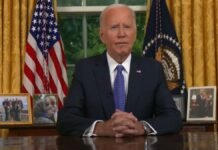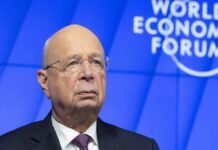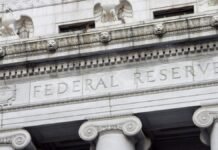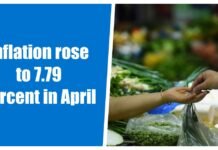
Another month, one other four-decade excessive for inflation. For the 12 months that led to March, shopper costs rocketed 8.5%. That was the quickest year-over-year soar since 1981, far surpassing February’s mark of seven.9%, itself a 40-year excessive.
Even for those who toss out meals and vitality costs — that are notoriously unstable and have pushed a lot of the value spike — so-called core inflation jumped 6.5% previously 12 months. That was additionally the sharpest such soar in 4 a long time.
Consumers have felt the squeeze in on a regular basis routines. Gasoline is up a median of 48% previously yr. Airline tickets are up 24%, males’s fits almost 15%, bacon 18%.
The Federal Reserve by no means anticipated inflation this extreme or persistent. Back in December 2020, the Fed’s policymakers had forecast that shopper inflation would keep under their 2% annual goal and finish 2021 at round 1.8%.
Yet after having been merely an afterthought for many years, excessive inflation reasserted itself final yr with brutal pace. In February 2021, the federal government’s shopper worth index was operating simply 1.7% above its stage a yr earlier. From there, the year-over-year will increase accelerated — 2.6% in March, 4.2% in April, 5% in May, 5.4% in June.
By October, the determine was 6.2%, by November 6.8%, by December 7%.
For months, Fed Chair Jerome Powell and a few others characterised larger shopper costs as merely “transitory” — the outcome, primarily, of transport delays and momentary shortages of provides and staff because the economic system rebounded from the pandemic recession a lot sooner than anybody had anticipated. Now, most economists anticipate inflation to stay elevated effectively into subsequent yr, with demand outstripping provides in quite a few areas of the economic system.
So the Fed has radically modified course. Last month, it raised its benchmark short-term fee by a quarter-point and is anticipated to maintain elevating it, most likely aggressively, effectively into 2023. In doing so, the Fed is transferring decisively away from the ultra-low charges that helped revive the economic system from the recession but additionally helped gas surging shopper costs.
The Fed is making a high-risk guess that it could actually sluggish the economic system sufficient to rein in inflation with out weakening it a lot as to set off a recession. The total economic system is wholesome, with a strong job market and intensely low unemployment. But many economists say they fear that the Fed’s regular credit score tightening will trigger an financial downturn.
WHAT’S CAUSED THE SPIKE IN INFLATION?
Good information — largely. When the pandemic paralyzed the economic system within the spring of 2020 and lockdowns kicked in, companies closed or reduce hours and shoppers stayed dwelling as a well being precaution, employers slashed a wide ranging 22 million jobs. Economic output plunged at a record-shattering 31% annual fee in 2020’s April-June quarter.
Everyone braced for extra distress. Companies reduce funding and postponed restocking. A brutal recession ensued.

But as a substitute of sinking into a protracted downturn, the economic system staged an unexpectedly rousing restoration, fueled by huge infusions of presidency help and emergency intervention by the Fed, which slashed charges, amongst different issues. By spring of final yr, the rollout of vaccines had emboldened shoppers to return to eating places, bars, retailers, airports and leisure venues.
Suddenly, companies needed to scramble to satisfy demand. They couldn’t rent quick sufficient to fill job openings or purchase sufficient provides to satisfy buyer orders. As enterprise roared again, ports and freight yards couldn’t deal with the site visitors. Global provide chains seized up.
With demand up and provides down, prices jumped. And corporations discovered that they may cross alongside these larger prices within the type of larger costs to shoppers, a lot of whom had managed to pile up financial savings through the pandemic.
Critics blamed, partly, President Joe Biden’s $1.9 trillion coronavirus aid bundle, with its $1,400 checks to most households, for overheating an economic system that was already scorching by itself. Many others argued that the Fed stored charges close to zero far too lengthy, lending gas to runaway spending and inflated costs in shares, houses and different property.
HOW LONG WILL IT LAST?
Elevated shopper worth inflation may endure so long as corporations battle to maintain up with shoppers’ demand for items and providers. A recovering job market — employers added a document 6.7 million jobs final yr and are including 560,000 a month up to now this yr — implies that Americans as an entire can proceed to splurge on every little thing from garden furnishings to electronics.
Many economists foresee inflation staying effectively above the Fed’s 2% annual goal this yr. But aid from larger costs could be coming. Jammed-up provide chains are starting to indicate some indicators of enchancment, no less than in some industries. The Fed’s pivot away from easy-money insurance policies towards an anti-inflationary coverage may finally scale back shopper demand. There might be no repeat of final yr’s COVID aid checks from Washington. Inflation itself is eroding buying energy and may power some shoppers to shave spending.
At the identical time, new COVID variants may cloud the outlook — both by inflicting outbreaks that power factories and ports to shut and disrupt provide chains much more or by conserving individuals dwelling and lowering demand for items.
HOW ARE HIGHER PRICES AFFECTING CONSUMERS?
The sturdy job market is boosting staff’ pay, although not sufficient to offset larger costs. The Labor Department says that after accounting for larger shopper costs, hourly earnings for private-sector staff fell 2.7% final month from a yr earlier, the twelfth straight such drop.
There are exceptions: After-inflation wages rose 8% for lodge staff and 4% for restaurant and bar staff in March from a yr earlier.
Partisan politics, within the meantime, is influencing the way in which Americans view the inflation menace. With a Democrat within the White House, Republicans are way more possible than Democrats to say that inflation is having a destructive impact on their private funds, based on surveys of shopper sentiment performed by the University of Michigan.




















































